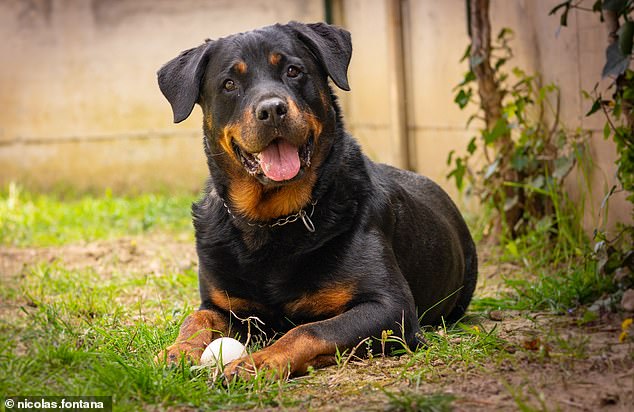Who is a smart boy? Research reveals the most INTELLIGENT dog breeds – so is your dog on the list?

In the animal kingdom, having a big brain is usually linked to being smarter.
But a new study by scientists in France shows that this isn’t really true when it comes to domestic dogs.
Researchers from the University of Montpellier analyzed the brains of more than 170 dog breeds, using the ratio of brain size to body size to measure how ‘big’ or ‘small’ their brains were.
They found that breeds with smaller brains respond best to training and have good short-term memory – two traits considered ‘smart’ in dogs.
Meanwhile, breeds with larger brains scored higher on anxiety, aggression, attention-seeking behavior and separation anxiety – traits linked to stupidity.
So if you have a large dog, such as a retriever, rottweiler, or Siberian husky, chances are it has a smaller brain (when brain-to-body ratio is applied).
but higher brain power.
But if you have a smaller, “fashionable” dog that fits in your bag, he probably has a bigger brain, but less brain power.
While the new findings may seem counterintuitive, the scientists explain that excessive breeding by humans has disrupted the natural layout of dogs’ brains.

if you have a large dog, like a retriever, rottweiler (pictured), or Siberian husky, they probably have smaller brains but greater brain power.

In the animal kingdom, large brains are generally seen as a sign of more advanced cognitive skills, but dogs seem to break this rule
The new study was led by Ana Balcarcel, a biologist and paleontologist at the University of Montpellier, and published in Biological letters.
“Dogs exhibit multiple personalities, functions, and cognitive abilities that may exceed those of nonhuman primates,” Balcarcel and colleagues say in their paper.
‘Our results show that complex skills and cooperative behavior – a hallmark of social cognition – do not predict greater [brain size] in dogs.’

Toy dogs have larger brains (relative to their body size), while working dogs have smaller brains relative to their body size

Smaller ‘toy breeds’, such as Pomeranians and Chihuahuas (pictured), had the largest relative brain size, the team says. This is linked to more stupid traits – namely anxiety, aggression, attention seeking and separation anxiety
The researchers explain: ‘REV increases with anxiety and aggression, attention seeking and separation anxiety and decreases with trainability.’
It’s possible that the brains of larger “working” dogs may have been reorganized into a more compact space, which the researchers say led to their reported improved cognition.
In the animal kingdom, large brains are generally seen as a sign of more advanced cognitive ability.
However, the findings show that dogs appear to break this rule.
The researchers say: ‘This hypothesis is contradicted by domesticated populations, who despite having smaller brains compared to their wild counterparts, can demonstrate enhanced cognitive abilities.’

Larger ‘working’ breeds – such as retrievers (pictured) – had the smallest relative brain size, making them one of the most intelligent dog breeds
Dogs are an outlier in this regard, probably because they have been intensively bred by humans over the centuries, dramatically distorting their physical characteristics.
The concept of ‘race’ is not natural; rather, it was invented by humans when we started intensively breeding dogs around the end of the 19th century.
Since then, dogs have been selectively bred to accentuate harmful characteristics to create these so-called breeds to distinguish them from one another and fuel the dog buying industry.
Overall, domestic dogs have a brain size that is on average 20 percent smaller than that of their closest living wild relative, the gray wolf (Canis lupus).
Whether foraging for food, avoiding predators or finding a mate, domesticated dogs have fewer cognitive demands than wild dogs.
As a result of this reduction in the need for brain power, the brains of domestic dogs have gradually shrunk, the theory goes.
The researchers admit that personalities, abilities and cognitive abilities “may vary within races and between individuals.”




